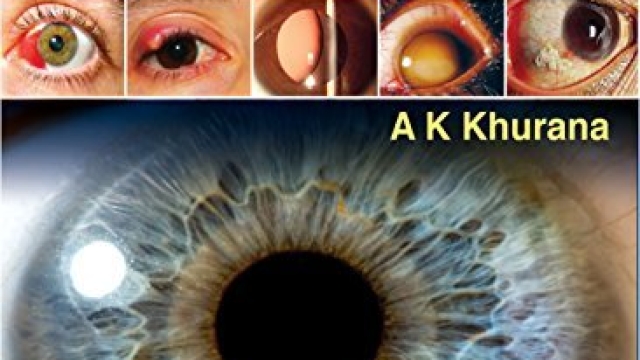Retinopathy, a condition that affects the delicate tissues of the retina, has long remained a mystery in the realm of ophthalmology. With its detrimental impact on vision, understanding the intricacies of this ailment holds the key to preventing and managing its progression. From the crucial role of regular diabetic eye screenings to its association with other eye disorders like glaucoma, delving into the realm of retinopathy promises to shed light on its enigmatic nature. In this article, we will embark on a journey to unravel the mysteries of retinopathy, uncovering insights that may greatly contribute to preserving and restoring vision. So, let us embark on this informative expedition to enhance our understanding of this complex ocular condition.
Understanding Retinopathy
Retinopathy is a condition that affects vision and is often associated with other eye-related diseases such as glaucoma. It is commonly seen in patients who have diabetes, making regular ophthalmology check-ups and diabetic eye screenings crucial for early detection and treatment. In this article, we will delve into the mysteries of retinopathy, exploring its causes, symptoms, and potential treatment options.
Retinopathy, a progressive eye disease, primarily affects the retina, which is responsible for converting light into electrical signals that are sent to the brain. In the early stages, retinopathy may not manifest any noticeable symptoms, highlighting the importance of routine eye screenings. As the disease advances, however, symptoms may include blurred or distorted vision, impaired color vision, and the appearance of floaters or spots in one’s visual field.

The leading cause of retinopathy is diabetes, especially if it is not adequately controlled. High blood sugar levels can damage the blood vessels in the retina, leading to its deterioration over time. Additionally, retinopathy can also be a result of other underlying health conditions such as high blood pressure or kidney disease. Understanding these risk factors and managing them effectively is crucial in preventing or delaying the onset of retinopathy.
The Importance of Diabetic Eye Screening
Diabetic eye screening plays a crucial role in identifying potential vision impairments associated with retinopathy. This screening is especially vital for individuals living with diabetes, as they have an increased risk of developing this condition. By regularly undergoing diabetic eye screening, patients can take proactive measures to detect and manage retinopathy at an early stage.
Early detection of retinopathy through diabetic eye screening allows for timely intervention and treatment. This screening process involves a thorough examination of the retina, the light-sensitive tissue at the back of the eye. Ophthalmologists, specializing in the field of ophthalmology, employ various techniques and technologies to assess the health of the retina and identify any abnormalities.
The significance of diabetic eye screening extends beyond retinopathy alone. It also helps detect other eye conditions, such as glaucoma. Glaucoma is another prevalent eye disorder characterized by damage to the optic nerve, often linked to increased intraocular pressure. Regular screenings enable eye care professionals to identify glaucoma in its early stages, thus facilitating appropriate treatment and preventing further vision impairment.
By prioritizing diabetic eye screening, individuals with diabetes can actively manage their eye health and mitigate the risks associated with retinopathy and other eye conditions. It is essential for those at risk to adhere to regular screening schedules as recommended by their healthcare providers. These screenings are a critical step towards retaining optimal vision and preserving the overall quality of life for those affected by diabetes.
Exploring the Link Between Retinopathy and Glaucoma
Retinopathy and glaucoma are two eye conditions that are closely linked and can significantly impact one’s vision. Understanding the connection between these two conditions is crucial in diagnosing and managing them effectively.
Retinopathy, a condition commonly associated with diabetes, occurs when the blood vessels in the retina, the light-sensitive tissue at the back of the eye, become damaged. This damage can lead to vision impairment and, if left untreated, even blindness. Diabetic eye screening plays a vital role in early identification of retinopathy, allowing for timely intervention and improved outcomes.
On the other hand, glaucoma is a group of eye diseases that damage the optic nerve, responsible for transmitting visual information to the brain. Increased pressure within the eye is a primary factor in glaucoma development, and if left untreated, it can result in irreversible vision loss. While glaucoma and retinopathy have distinct causes, emerging research indicates a possible connection between the two conditions.
Pediatric ophthalmology
Recent studies suggest that individuals with diabetic retinopathy may be at a higher risk of developing glaucoma. The underlying mechanisms linking these conditions are not fully understood. However, it is believed that the damage to the blood vessels in retinopathy may influence the circulation and fluid dynamics within the eye, contributing to the development or progression of glaucoma.
It is essential for healthcare professionals, particularly ophthalmologists, to be aware of this potential link between retinopathy and glaucoma. Screening for both conditions, especially in patients with diabetes, can help identify those at risk and initiate appropriate treatments. By managing retinopathy and glaucoma early on, we can prevent or slow down the progression of vision impairment, ultimately improving the quality of life for individuals affected by these conditions.


